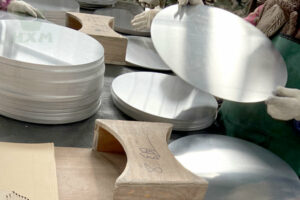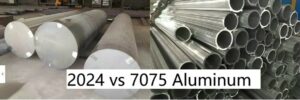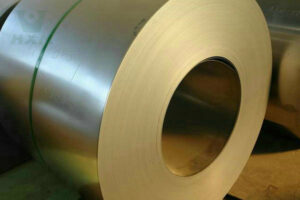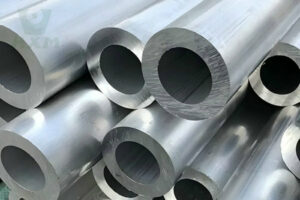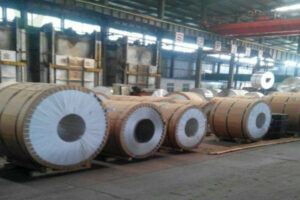Aluminum A6061 is an aluminum alloy in the 6000 series and is a representative material used in industrial products, building materials, furniture, etc. It can be found in various products in ordinary households. There are many types of aluminum alloys because they contain different substances and have different properties, such as strength and corrosion resistance. Not just any aluminum alloy can be used. Each aluminum alloy has its own characteristics. The important thing is to choose the most suitable material according to the specific application!
This article will introduce the advantages, disadvantages, uses, and differences between A6061 and other aluminum materials.
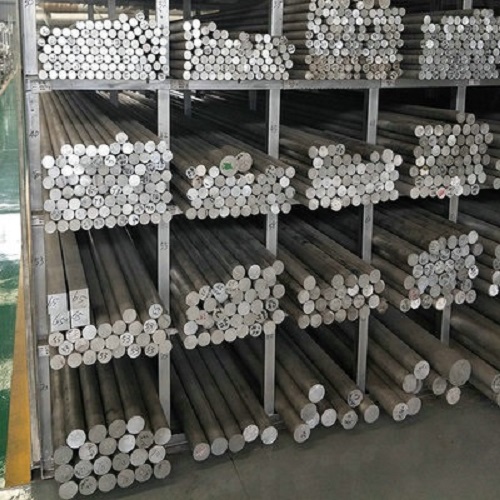
What is Aluminum A6061?
Aluminum alloys come in different specifications from 1000 series to 8000 series. A6061 belongs to the 6000 series of aluminum alloys and is a material containing magnesium and silicon. As a 6000 series material, another common one is A6063, which is often used as extrusion material. A6061 has excellent corrosion resistance. But it is not as strong as other aluminum materials.
Therefore its strength and hardness can be improved by heat treatment. A6061 is mainly distributed in the form of round rods and plates. Round rods can be machined, while sheets can be punched or bent. Because of its excellent corrosion resistance, it is often used in automobile-related parts, etc. On the other hand, this material is not suitable for welding, so attention must be paid to fastening methods. Screws, bolts or rivets are generally used for fastening. But this is not to say that welding cannot be used at all, but because welding is difficult to achieve the expected strength, it is not commonly used.
Features of Aluminum A6061
We analyze the characteristics of A6061 from two aspects: advantages and disadvantages.
Advantages of A6061
Excellent Corrosion Resistance: Its main advantage is its excellent corrosion resistance. Not easy to rust and corrode, so it can be used even in harsh working environments. Aluminum combines easily with oxygen to form an oxide film on the surface. This film protects against corrosion, but this property is further enhanced by the addition of magnesium to A6061, making it even more resistant to corrosion.
T6 Treatment Increases Hardness: Without heat treatment, this material is less strong. But after T6 treatment, its strength is second only to 2000 series aluminum alloys such as A2017 and A2024. T6 treatment is the most representative heat treatment method for aluminum materials. Solution treatment is followed by quenching and then aging treatment to improve strength. Because the temperatures of solutionization and aging treatment are different, two furnaces need to be used to perform them separately.
T6 treatment leaches out copper and magnesium in A6061, thereby increasing its strength. The tensile strength of A6061 without heat treatment is about 125N/mm^2; after T6 treatment, it can be increased to about 310N/mm^2.
Excellent Forgeability: Forging is a process in which heated metal is pressed into the shape of a die; A6061 is one of the easiest aluminum alloys to forge. It can be used for structural parts in automobile parts that are subject to impact and require high strength. Unlike cutting, forging is suitable for mass production.
Disadvantages of A6061
Without T6 Treatment, Lower Strength: A6061 without T6 treatment is a lower strength material among aluminum alloys. Consideration must be given to its suitability for parts that do not require high strength. In addition, T6 treatment also requires equipment such as heating furnaces. Therefore, the cost of installing the equipment is high. In addition, due to the increase in heat treatment processes, the overall processing cost also increases.
Poor Weldability: The solder joints of A6061 have low strength and cannot have high strength requirements in the welding area. Therefore, it is recommended to use A5052 or similar materials when welding is required. When connecting to other parts, screws, bolts, rivets, etc. are required. This requires a larger operating space, which must be taken into account during design.
Easily Scratched Surface: Aluminum is generally a soft material and its surface can be easily scratched. For example, damage may occur due to collision or friction with other objects when taking it out of a storage shelf or box. The hardness of A6061 is about 30HB, which is slightly lower than the 47HB of general aluminum alloy A5052. Therefore, if the surface oxide film is damaged by scratches, corrosion is more likely to occur.
Application of Aluminum A6061
A6061 is versatile and is a material that can be used in furniture and other household items. Here are some of its main uses.
- Building Materials, Mechanical Materials, and Land Structures: A6061 has relatively high corrosion resistance among aluminum alloys, so it is often used in building materials, land structures, and other outdoor parts.
- Ship and Vehicle Parts: A6061 can also be used in ship and vehicle parts. Due to its excellent corrosion resistance, this material is ideally suited for use on ships exposed to seawater where corrosion-resistant materials are required, as well as vehicle components exposed to weather and weather.
- Pipes: A6061 can also be used as a pipe material.
Differences Between A6061 and other Aluminum Materials
There are many types of aluminum alloys. From 1000 series to 8000 series, each has different characteristics.
Differences Between A2017 and A6061
A2017, like A6061, has poor weldability, so screws, bolts, rivets, etc. need to be used for connection.
A6061 can be strengthened with T6 treatment, but A2017 is stronger. Therefore, A2017 is recommended where strength is required but corrosion resistance is not required. However, if a certain strength and corrosion resistance are required, it is recommended to use A6061 and perform T6 treatment.
Differences Between A5052 and A6061
A5052 is not as corrosion resistant as A6061. However, A5052 is also one of the more corrosion-resistant aluminum alloys. In terms of strength, A6061 treated with T6 is superior, while A5052 is inferior.
Compared with A6061, the advantage of A5052 is its solderability. The solder joint strength of A6061 is lower, so A5052 is more suitable for parts that need to be soldered. A6061 is suitable for situations with higher strength and corrosion resistance requirements, while A5052 is more suitable for situations with medium strength and welding requirements.
Differences Between A6063 and A6061
The strength of Aluminum A6063 is lower than that of A6061, but its extrusion processability, corrosion resistance, and surface treatment properties are excellent. Pipes, angle aluminum, and angle bars are only available in Aluminum A6063 material.
In Conclusion
Aluminum A6061 is an aluminum alloy with excellent corrosion resistance that can be heat treated to increase its strength. But it also has the disadvantage of poor weldability. The choice of aluminum alloy depends on the properties required. The characteristics of Aluminum A6061 and other materials should be fully understood, and then reasonable materials should be selected.
